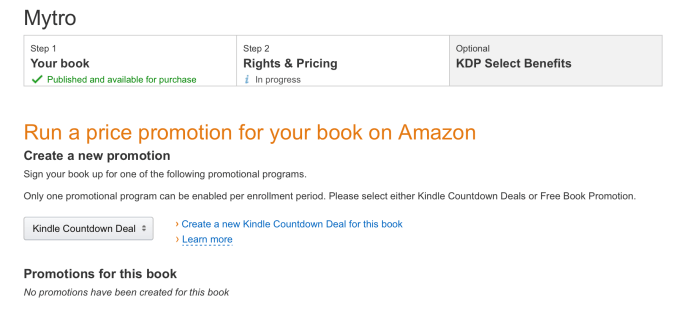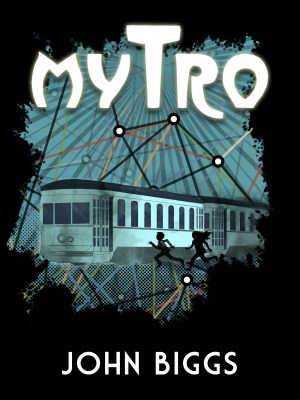The Mytro Project is almost over. Over the past few months I’ve been writing about my experience crowdfunding and self-publishing a YA fantasy book called Mytro. After running an Indiegogo campaign and coming out with almost $20,000, I’m at the point where I have to start delivering books.
When I started writing Mytro I wanted to go the traditional publishing route. I sent it to two agents who, I presume, didn’t trust it to sell enough units and, for all I know, they could still be right. However, I didn’t listen to them and so far I’ve been successful. Here’s what I did to prepare the book over the past few months.
I started by rereading what I had written and trying to clean it up as much as possible. I thought I was happy with it until I found entire center sections that made no sense. I needed more help.
I found a “developmental editor” named Sharon Honeycutt who had edited and written children’s literature. She was sufficiently removed from my own geographic location – she lives in the Midwest – that I thought she’d be an excellent extra pair of eyes without who could give me a bit of grounding. She did. I paid her about $400 for her time and she was well worth it. A dev editor is supposed to smooth down the rough edges. The resulting book was solid but not quite ready.
I then ran it by another pair of eyes, our own copy editor Chris Nesi. He checked my spelling and made things more readable. I then got Bryce Durbin, our illustrator, to make a great cover and some inside graphics. Finally I paid an epub designer to clean up the copy and put it into mobi and epub format. I found the designer, Shelley Glasow Schadowsky, on Smashwords where I originally thought about publishing. All told, I paid about $2,000 for all this work which would probably cost far more if this were a legitimate publishing endeavor.
I decided to make the book DRM-free and sent out copies of the epub to backers who could then side-load it onto their devices. I also considered Creative Commons, which would essentially make it free. I’m not quite ready to dump it into the Creative Commons although one of my heroes, John Sudman, just did just that. He made his book, Biodigital, available at Unglue.it, which drops the book into Creative Commons once it passes a certain point in sales. It’s a fascinating tool and looks like it could make him some money and grow some readership.
“I’ve had books under Creative Commons license for some time now, but it’s been a while since I advertised that fact or made free books available from my site. I like the idea of Creative Commons, but I also like the idea of paying my bills. So instead of steering readers to free versions of my books, I’ve steered them to Amazon and Barnes & Noble and places like that, where I actually can sell them,” he said.
“My support of Creative Commons is somewhat philosophical but mostly pragmatic. People are going to copy digital goods – songs, books, movies, whatever. There’s no point in trying to fight that tide. Creative Commons offers a way to ride that tide, as it were. If nothing else, it allows me some measure of publicity, and some goodwill in the bookreading community.”
I also didn’t want to sell this thing myself via Paypal or bitcoin. It just didn’t make sense given how much work I would have to do maintaining a web store. After looking around at distribution possibilities, I decided to go with Amazon’s Kindle Direct Publishing as well as their free KDP Select program. This allowed me to get it up on Amazon – arguably the biggest publisher in this space – quickly.

KDP Select allows you to set up special pricing tricks, including a time-sensitive discount as well as making the book free for short periods of time. This is a great way to market if you have the right platform, and I’m looking forward to trying them.
That decided, I was ready to go. Yesterday morning, on a whim, I looked up the process on Amazon and saw it wasn’t very onerous. It consisted of typing in some book info, uploading a cover, and then uploading the mobi. After a bit of tax information input, I simply pressed a button.
https://twitter.com/johnbiggs/status/462597962372485121
An hour later, I was a published author.
I’m not done yet. I’m working on getting a print publishing partner to get my print edition out to backers and then perhaps something like CreateSpace to print future editions on demand. I explored printing locally in New York but it ended up being too expensive so I’ve probably settled on printing in Canada. I also looked into printing in China, but it seemed a little resource-intensive to send a few hundred books from Asia.
Makerbot also helped me out by setting its bot farm to print 75 little rail cars for me. Those will go out with the hardcover editions of the book. Mytratti backers will be getting something a bit more special.
In short, this process was far smoother than I expected. While I don’t have the might of a big publisher behind me (which, in some ways, is futzing with my confidence at this endeavor) I keep reminding myself that I am — at least in the eyes of the world — a published author. There are plenty of worse books out there that get published for any number of reasons, and there are plenty of better books that never get published because their authors didn’t have the opportunities afforded today’s self-publisher. As I wrote on CrowdfundInsider, “self-publishing” is no longer a dirty word.
“One of the worst things I’ve ever seen was a grunting, sweating man trying to haul the boxes of of his own books to his station wagon after unsuccessfully trying to sell his wares at a strip mall,” I wrote. “He was the vanity press epitomized.”
That’s no longer the case. Maybe what I’m doing is vanity press 2.0, full of flashy, scammy websites and easy access to skilled, mercenary editors. Or maybe it’s the next big thing. I don’t know, but damn if it wasn’t a lot of fun.
